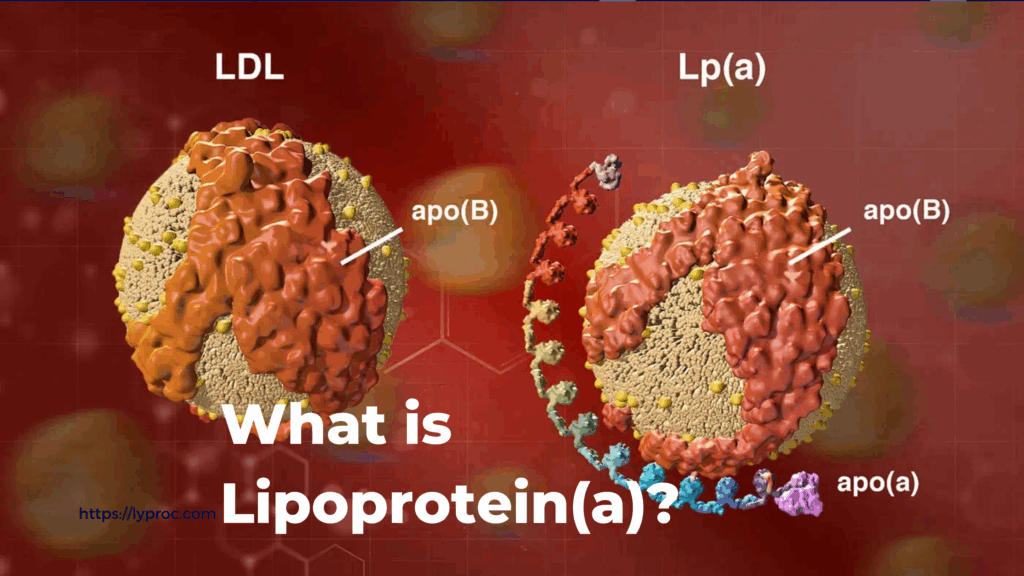Introduction
What Is Lipoprotein(a)? Understanding the Silent Heart Risk
Cardiovascular disease remains a leading cause of death worldwide. Most people know about cholesterol and blood pressure as risk factors, but many overlook lipoprotein(a). This tiny particle could quietly increase your risk of heart problems without obvious symptoms. Knowing what lipoprotein(a) is can help you take action before it becomes a problem.
Table of Contents
What Is Lipoprotein(a)? Definition and Composition
Understanding Lipoproteins in the Body
Lipoproteins are tiny packages made of fat and protein. They carry cholesterol and other fats through your blood. Without them, fats would never reach your cells or be removed from your body.
Defining Lipoprotein(a)
Lipoprotein(a), often called Lp(a), is a special type of lipoprotein. It looks like LDL cholesterol, the “bad” cholesterol that clogs arteries. But Lp(a) has an extra piece attached, making it different from the usual LDL.
The Composition of Lp(a): Lipids and Proteins
Lp(a) is made of two main parts:
- Apolipoprotein B: Acts like a delivery truck, carrying fats and cholesterol.
- Apolipoprotein(a): Attached to B, this piece is what makes Lp(a) unique. It has a shape similar to a protein called plasminogen, which helps dissolve blood clots. This similarity might cause Lp(a) to interfere with blood flow and clog arteries.
The Science Behind Lipoprotein(a): How It Affects Heart Health
How Lp(a) Contributes to Atherosclerosis
Lp(a) can promote plaque buildup in your arteries. It deposits fats and triggers inflammation, leading to clogged arteries. Its shape also makes it stick to arterial walls more easily. Over time, this buildup narrows blood flow and raises your chance of heart attack and stroke.
Genetically Determined Levels
Your Lp(a) level mainly depends on genetics. Some people inherit high levels from their parents. Unlike cholesterol, which can change with diet and exercise, Lp(a) stays pretty much the same throughout your life. If your family has a history of heart disease, it’s even more important to check your Lp(a).
Risk Factors Associated with Elevated Lp(a)
People with high Lp(a) face greater risks of heart disease, even if they lower other risk factors. Conditions like high blood pressure, smoking, and diabetes can make things worse. If you have a family history of early heart problems, you should consider testing your Lp(a).
Measuring Lipoprotein(a): Tests and Interpretation
How Is Lp(a) Tested?
Doctors usually test Lp(a) with a simple blood test. The lab measures the amount of Lp(a) in your blood, often reported in milligrams per deciliter or nanomoles per liter. The results can vary depending on the test used.
Interpreting Test Results
High Lp(a) levels often mean higher risk. Normal levels are usually below 30 mg/dL, but some experts suggest that anything above 50 mg/dL needs attention. Even moderate levels might increase your risk if other factors are present.
When to Test for Lp(a)
If you’ve had a heart attack or stroke with no clear cause, your doctor might suggest testing your Lp(a). People with a family history of heart disease should also consider checking. It’s best to test early, especially if risk factors like high cholesterol don’t tell the full story.
Managing Elevated Lipoprotein(a): Treatments and Lifestyle Changes
Medical Interventions
There are few medications that directly lower Lp(a). Niacin used to be common, but its side effects limit use now. PCSK9 inhibitors, a newer class of drugs, can reduce Lp(a) by about 25-30%. Researchers are developing new therapies that target Lp(a) specifically.
Lifestyle Modifications
While you can’t change your genetic makeup, lifestyle still matters. A heart-healthy diet, rich in fruits, vegetables, and whole grains can support overall health. Regular exercise, quitting smoking, and maintaining a healthy weight lower your chances of plaque buildup.
Future Therapies and Research
Scientists are testing new drugs that specifically lower Lp(a). These include antisense oligonucleotides, which can cut down Lp(a) production. Personalized treatments based on your genetic makeup could soon become common, offering better ways to manage high Lp(a).
Real-World Examples and Expert Insights
High Lp(a) can strike anyone. For example, a patient with no major risk factors suddenly suffered a heart attack. Tests revealed high Lp(a), leading to targeted treatment. Cardiologists emphasize awareness — knowing your levels can save lives.
Dr. Jane Smith, a leading heart specialist, says, “Lipoprotein(a) is often overlooked. But by testing and managing it, we can better prevent heart disease.” Recent studies show high Lp(a) levels can double or even triple your risk for heart attacks, especially if other factors are present.
Conclusion
Lipoprotein(a) is a tiny but powerful contributor to heart disease. It’s mostly inherited and often goes unnoticed. Testing for Lp(a) can be a crucial step in protecting your heart. If levels are high, medical options and lifestyle changes can make a difference.
Take action today: talk to your healthcare provider about testing your Lp(a). Adopt heart-smart habits, and stay informed about new treatments on the horizon. Understanding and managing lipoprotein(a) could be the key to a healthier, longer life.
Lypro-C is a nutritional supplement that lowers lipoprotein a. Visit https://lyproc.com
keywords
Lipoprotein a
Lpa
Lpa test
High lpa
Risk of heart attack
Genetics
Cardiovascular
PCSK9 inhibitors
How is lpa tested
What is lpa
Emerging risk factor
Independent risk factor
Cholesterol
apolipoprotein

